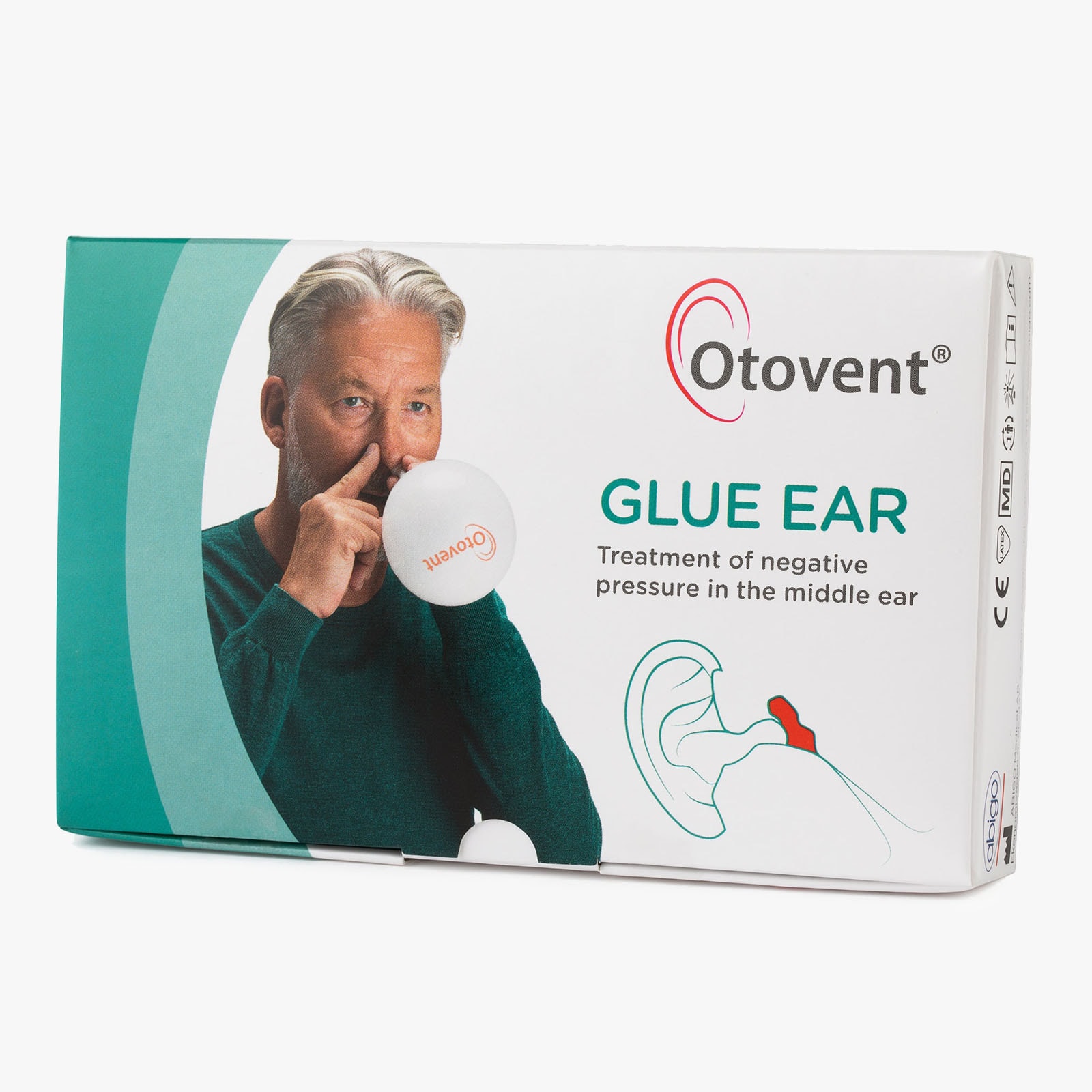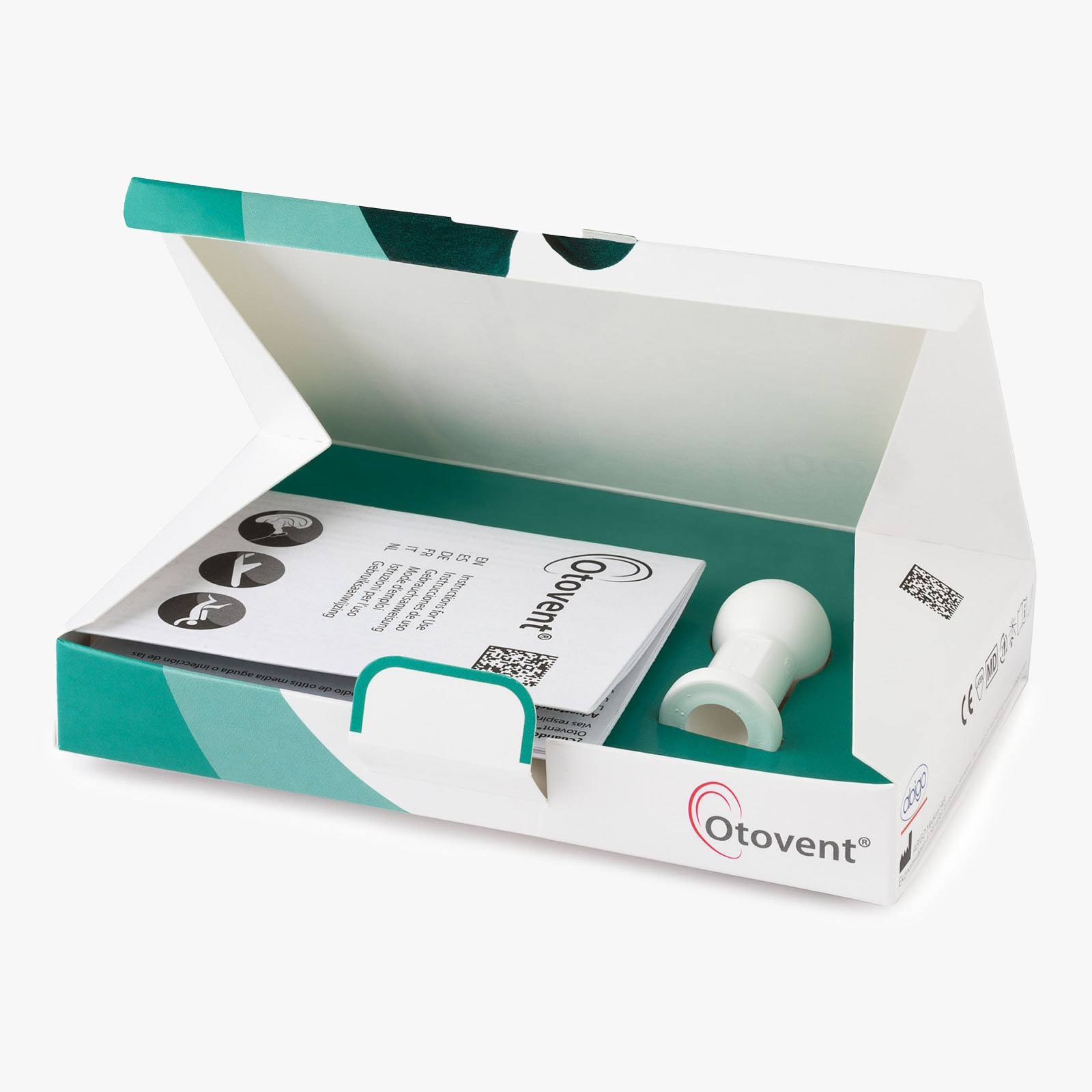Description
This device is the same as the original Otovent device but with five extra balloons. Extensive studies on Otovent as a glue ear treatment have been carried out on child patients and are available to access from our Clinical Data page. In summarising these child patient clinical trials, the National Institute for Health and Care Excellence (NICE) have recommended the Otovent treatment be used during the active observation period (also known as “watchful waiting”).
Consumer/Medical Info
The balloons contain latex, if you are allergic to latex or latex products consult your physician before using this product. If you experience any allergic symptoms, stop treatment and consult your physician.
Keep out of reach of children. The treatment of children should always be supervised by an adult. Never use toy balloons in performing the otovent method as toy balloons do not give the proper inflation pressure and may cause treatment failure.
Some people may suffer from frequent episodes of anterior nosebleeds. The condition is a nuisance but harmless, any manipulation of the nose may provoke an episode (nose-picking, nose-blowing or balloon inflation). Usually the condition can be easily cured after a visit to the ENT doctor.
Maintenance
Clean the nose piece with mild detergent after use. Rinse the nose piece with clean water. Discard used balloons when they have been inflated 20 times.
Storage
When not in use, protect the nose piece and the balloons against light, keep the items in the box.
FAQ
Why should I use Otovent?
Otovent can be used in any situation where you cannot clear negative middle ear pressure (Eustachian tube dysfunction), otitis media with effusion, during or after a flight, after diving, pressure chamber treatment). If left untreated, these conditions may lead to a temporary sensation of heaviness and impaired hearing. After a few weeks, fluid may also collect in the middle ear. Otovent equalises the pressure and relieves the symptoms in the middle ear.
How does the Otovent method work?
The Otovent method can be divided into two phases. Both phases allow the opening of the Eustachian tube.
The Inflation Phase
When you inflate the balloon by blowing through your nostril
The Deflation Phase
(To be used only if the inflation phase is ineffective): when you let the air flow from the balloon into your nostril, and perform a sequence of swallowing maneuvres.
You are recommended to use the inflation phase the first few times you use Otovent. However, only in the event that you do not feel any pressure equalisation as a result of the inflation phase should you use both phases.
Who can use Otovent?
Adults and children aged 3 years and up. The treatment of children should always be supervised by an adult.
How often and how long should I use Otovent?
Initially, Otovent should be used at least three times a day (morning, noon, evening). After one week, it should be used at least twice a day (morning and evening). The normal duration of treatment is 2 – 3 weeks, after which a physician should decide whether or not to continue with the treatment. Each medical balloon may be inflated a maximum of 20 times.
When should Otovent not be used?
Otovent should not be used if you are suffering from acute otitis media or upper respiratory tract infection.
How do I use Otovent?
Inflation Phase
- Connect the balloon to the nose piece
- Hold the round part of the nose piece firmly against your right nostril with your right hand. Press your left nostril closed, using the fingers of your left hand
- Inhale deeply and close your mouth, inflate the balloon until it is the size of a grapefruit, by blowing through your right nostril
- Repeat the procedure with your left nostril
Some patients may experience discomfort in the ear or dizziness during inflation. This initial sensation will decrease during the next inflation and is an indication that the procedure is working correctly.
If you do not feel anything in your ear, then when the balloon is inflated, still with your mouth closed, and with the nose-piece firmly against your nostril:
- Perform a sequence of swallowing maneuvers (do not swallow the air from the balloon)
- Repeat the above steps with your left nostril
Delivery & Returns
If your order is placed between Monday and Friday before 12 noon (GMT), it will be dispatched the same day. Orders placed outside this time will be dispatched within 1 working day.
Our postage costs have all been calculated by weight and size, to ensure we offer you the most competitive rate possible.
Read more below about delivery to your region:
UK Delivery
- UK Royal Mail 1st Class: Expected to arrive in 1 working day
- UK Royal Mail Signed: Tracked delivery expected to arrive in 1 working day
- Free DHL Courier for orders over £50: Tracked courier deliver expected to arrive in 1 working day
International Delivery
It can take up to 3 weeks for our internationally delivered orders to arrive, however experience has told us that it’s usually a much shorter time frame. In some instances, your order may be split into multiple packages to ensure a speedy delivery. In some instances we may not be able to offer you standard international delivery either because of your order quantity or region. In these circumstances we ask you to contact us directly.
Returns
In the unlikely event that there’s a problem with your order we are of course more than happy to help. Please contact us before returning any orders.
Our full returns policy can be accessed from the Delivery & Returns section of our website.
Web Orders
- We will quickly resolve any issues you have with your order. Please get in touch
- If there is a problem with your order we will send you a pre-paid envelope for returning the item(s).
- Where there is a problem with your order we’ll be more than happy to offer you an exchange or full refund.
- Please let us know at your earliest if you no longer want your order as we will cancel prior to dispatch if possible.
- You have a period of 14 days following the placing of your order in which to request a refund. You will need to contact us before returning the order.
- You will be refunded your total order cost.
- You are responsible for returning the products to us in the original condition they were sent in. We cannot accept returns for damaged/opened products.
- A refund will be processed within 2 working days of receiving your return. Please allow up to 10 working days for the refund to appear in your bank account.
In Store Purchases
- For any orders bought in store, you will need to refer to your retailer’s return policy.
- If there is a problem with your purchase, please return the products to the point of purchase, where the retailer will be able to assist you.
- If you still encounter problems, please don’t hesitate to contact us directly.
Read more on our Delivery & Returns Page
Read more on our International Customers Page



